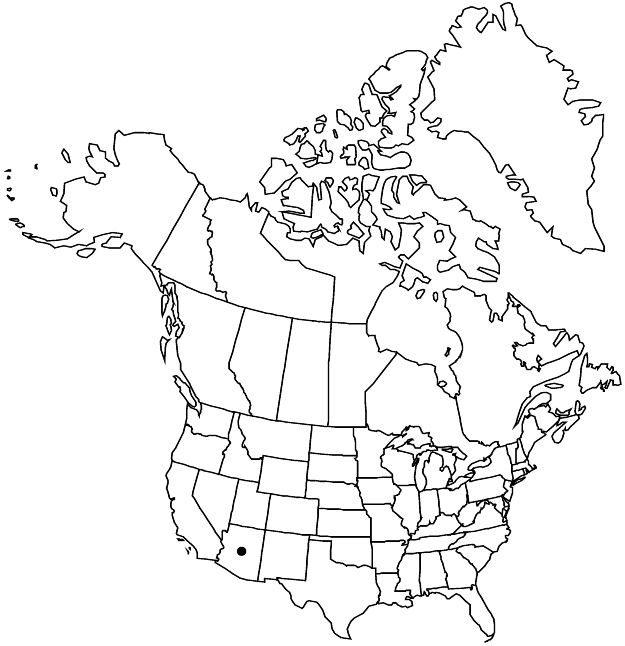Hibiscus biseptus
Proc. Amer. Acad. Arts 21: 418. 1886.
Subshrubs, to 1 m, herbage sparsely simple and stellate-hairy throughout, few to many-armed stellate hairs 2–3-dimensionally radiate. Stems also with a line of simple, fine, curved hairs decurrent from leaf base and extending from node to node. Leaves: stipules narrowly triangular, (4–) 5–10 mm; petiole 1/2 to ± equaling blade, with fine curved hairs adaxially; blade transversely to broadly ovate, 3 (–5) -lobed or parted, mostly 2–8.5 × 3–9 cm, base broadly cuneate to truncate or rounded or cordate, margins irregularly and sometimes doubly serrate or crenate-serrate, apex acute to short-acuminate, lobes narrowly elliptic to lanceolate, margins entire basally, coarsely serrate distally, surfaces scabridulous abaxially, less so adaxially, nectary present abaxially on midvein near base. Inflorescences solitary flowers in axils of distal leaves. Pedicels obscurely jointed below apices, to 17.5 cm, usually exceeding subtending leaves, sometimes much elongated; involucellar bractlets 8–12, linear-subulate, 1.5–2.5 cm, margins ciliate. Flowers horizontal to ascending; calyx neither accrescent nor inflated, it and involucel in fruit tinged basally with pink or purple, divided 4/5+ length, broadly campanulate, (1.4–) 2–2.8 cm, equaling or usually exceeding involucel, lobes narrowly lanceolate-triangular, margins ciliate, apices attenuate, nectaries absent; corolla rotate, petals cream [white], with maroon lines or spot basally, these sometimes faint or absent, asymmetrically obovate to broadly obovate, 3–4.5 × 1.8–2.6 cm, margins ± entire, sparingly hairy abaxially where exposed in bud; staminal column straight, pale-yellow or maroon, 1.1–1.5 cm, bearing filaments throughout, free portion of filaments not secund, 1.5–2.5 mm; pollen yellow to orange-red; styles white to maroon, 1–2 mm; stigmas white to maroon. Capsules dull yellow-green with darker medial stripe on each valve, ovoid to subglobose, 1–1.5 cm, much shorter than calyces, apex apiculate, glabrous. Seeds dark-brown, angulately reniform-ovoid, strongly depressed laterally, 2.5–3.5 mm, silky-hairy dorsally, glabrous laterally, with slightly raised pale-yellow zone near hilum. 2n = 22 (Mexico: Sinaloa).
Phenology: Flowering Aug–Oct.
Habitat: Desert scrub and grasslands
Elevation: 800–2300 m
Distribution

Ariz., Mexico (Baja California), Mexico (Chihuahua), Mexico (Jalisco), Mexico (Nayarit), Mexico (Sinaloa), Mexico (Sonora)
Discussion
Hibiscus biseptus is known from the southern Arizona counties of Maricopa, Pima, Pinal, and Santa Cruz.
Selected References
None.
Lower Taxa
"fine" is not a number. "fine" is not a number."elongated" is not a number.